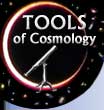
| |
 |
Who
Was Martin Ryle?
|
 |
|
|
|
Martin
Ryle (1918-1984)
Ryle worked on radar during World War II. After the war, he became a leader in the development of radio astronomy at Cambridge University. He and his Cambridge colleague Anthony Hewish were the first astronomers ever to receive the Nobel Prize, in physics, in 1974. Ryle received the prize for his overall contributions to radio astronomy, among which his survey of radio sources was outstanding, provided the primary argument of its day against steady-state theory. Hewish received the Nobel Prize for his discovery of pulsating radio sources, called pulsars, although it was his student Jocelyn Bell who made the actual discovery, in 1967. The period of the first studied pulsar, 1.3 seconds, was so regular that Hewish and Bell briefly thought it might be an interstellar beacon or radio lighthouse built by an alien civilization, and they called the source LGM 1, with LGM standing for Little Green Men. |
Copyright ©. Brought to you by the Center for History of Physics, a Division of the American Institute of Physics |
|
|||||